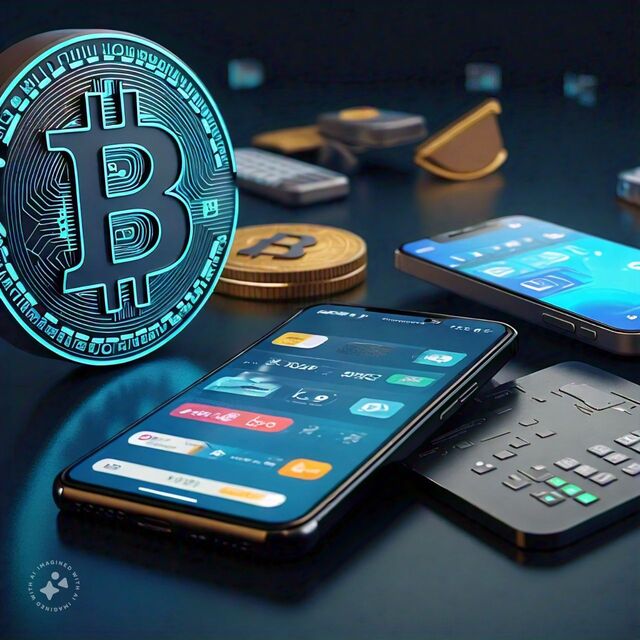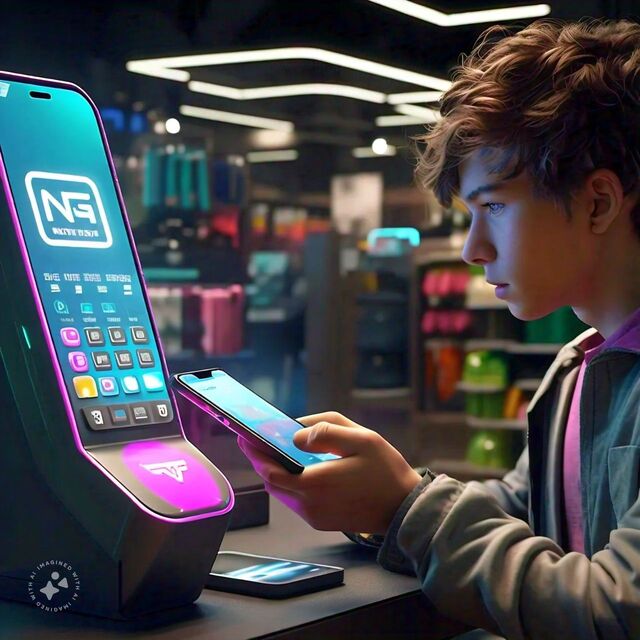Introduction: The Digital Payment Revolution
Have you ever thought about how you paid for your coffee today? Maybe it was with a fast touch of your phone, an examination of a QR code, or a swipe of your digital wallet. The manner we pay for goods has significantly changed throughout the previous ten decades but 2024 is a landmark year in the globe of digital payments. This comprehensive guide will examine how digital transactions alter deals, why these shifts signify, and what they mean for enterprises and customers. The direction of digital transactions isn’t merely a trend—it’s a core change in how we link with money. With the rise of cashless deals, digital currencies, touch-free transactions, and other developments, understanding the digital payment environment is essential for everybody looking to navigate today’s economy. Whether you’re an enterprise owner, a financial technology enthusiast or a curious customer, this guide will present you with a worthwhile understanding of the evolving global of digital payments.
1. What Are Digital Payments?
Digital transactions include any exchange where currency is traded electronically without physical cash. This includes digital deals, mobile transactions, digital purses, and the utilisation of digital currencies such as Bitcoin. But it’s not merely about replacing cash—digital transactions present comfort, speed, and security that conventional techniques struggle to match. In 2024, digital transactions are more than merely swiping a badge or making a bank transfer. They include groundbreaking answers like:
- Contactless Payments: NFC technology, touch-free cards, and smartphones facilitate fast deals by simply tapping or hovering throughout a terminal.
- Mobile Wallets: Platforms such as Apple Pay, Google Wallet, and Samsung Pay store badge particulars and facilitate easy deals through smartphones.
- Cryptocurrencies: Blockchain-based currencies such as Bitcoin and Ethereum are acquiring momentum for safe distributed transactions.
- Peer-to-Peer (P2P) Payment Apps: Applications such as Venmo, Paypal, and Zelle make it easy to send currency between individuals.
2. Why Digital Transactions Signify in 2024
Digital transactions are both convenient and necessary in a fast-paced, international world. Here’s why they’re more essential than ever:
- Speed and Efficiency: Digital transactions facilitate instant deals, reducing the time lag between paying and receiving funds. This is essential for enterprises that need fast currency movement and convenient customers.
- Enhanced Security: With encryption, multi-factor authentication, and biological verification, digital transactions present a tier of security that physical currency and inspections simply can’t. This is especially essential when digital fraud is a growing concern.
- Inclusivity and Accessibility: Digital transactions can reach people in remote areas where conventional banking services are unavailable, promoting monetary inclusion.
- Integration with Emerging Technologies: Digital transactions integrate seamlessly with techniques such as artificial intelligence (AI) ledgers and the Internet of Things (IoT), enabling more personalised and mechanised payment experiences.
3. Key Patterns in Digital Transactions for 2024
To truly comprehend how digital transactions are reshaping deals, it’s essential to look at the key patterns driving this transformation in 2024:
3.1. Rise of Buy Now Pay Later (BNPL)
The Bnpl prototype has become a widespread substitute for credit cards, allowing customers to spread transactions over time without interest. It’s particularly appealing to younger generations who prefer adaptability to conventional loans. Corporations such as Klarna Afterpay and Affirm lead this area, offering tailored payment plans at the point of sale.
3.2. Increased Acceptance of Digital Currencies
Digital currencies have shifted from risky assets to legitimate payment options. Major retailers now accept Bitcoin and Ethereum, and stablecoins—cryptocurrencies pegged to steady assets such as the US dollar—are acquiring momentum as a dependable transaction channel.
3.3. Central Bank Digital Currency (CBDCs)
Governments worldwide are exploring the advancement of Cbdcs, digital editions of domestic currencies. These aim to supply the benefits of digital currencies without the volatility, offering a government-backed digital payment method. Nations such as China, with its digital yuan, and the European Union are leading the charge.
3.4. Effortless Cross-border Transactions
Cross-border deals have traditionally been slow and costly. Digital payment platforms are making international transactions faster, cheaper, and more transparent. Blockchain-based answers such as Ripple’s XRP and Swift’s novel Gpi plan set novel standards for international currency transfers.
4. How Digital Transactions Improve Customer Experience
An effortless payment experience is essential for enterprises aiming to keep customers and drive sales. Here’s how digital transactions enhance the customer experience:
- Convenience: Digital purses and touch-free transactions eliminate the need to carry currency or cards, making deals more fluid for customers.
- Speed: More rapid checkouts diminish waiting times both digital and in-store, leading to enhanced customer satisfaction.
- Personalization: Payment information helps enterprises comprehend customer choices, allowing for tailored suggestions and faithfulness rewards.
- Enhanced Security: Features such as biological verification (fingerprint or facial recognition) make customers feel more safe about their transactions.
5. How Enterprises Can Adapt to the Digital Payment Environment
Adopting digital transactions is no longer voluntary for businesses—it’s a rival necessity. Here’s how enterprises can make the most of digital transactions in 2024:
- Integrate Multiple Payment Options: Offering a range of payment techniques, including mobile purses, Bnpl and digital currencies, ensures that customers can pay in their preferred way.
- Optimize for Mobile: As mobile transactions expand, ensure your payment frameworks are optimised for mobile users. This includes having a responsive website and a streamlined mobile checkout process.
- Focus on Security: Invest in strong security steps, such as tokenisation, end-to-end encryption, and PCI adherence, to safeguard customer information and construct trust.
- Use Payment Information for Insights: Payment information can provide worthwhile insights into customer behaviour, helping enterprises customise their offerings and improve marketing strategies.
6. The Function of AI in Digital Transactions
Artificial Intelligence (AI) plays a notable function in altering the digital payment ecosystem. Here’s how AI is being leveraged:
- Fraud Detection: AI algorithms examine exchange patterns to identify real-time capability fraud, protecting enterprises and consumers.
- Personalized Payment Experiences: AI enables personalised customer suggestions based on their payment records and purchasing habits.
- Automation: AI-driven mechanisation in payment processes reduces hand-operated errors and speeds up exchange processing, particularly for invoicing and recurring payments.
7. Obstacles Facing Digital Transactions in 2024
Despite the many benefits, the digital transactions environment faces certain obstacles that need to be addressed:
- Cybersecurity Threats: As digital payment acceptance grows, so does the risk of cyber-attacks. Enterprises and payment suppliers must stay ahead of evolving threats to safeguard transactions.
- Regulatory Compliance: Navigating distinct regulations across areas can be complex, especially for cross-border transactions and digital currencies.
- Digital Divide: While digital transactions are becoming more accessible, some populations still lack the foundation to embrace these techniques, especially in rural or undeveloped areas.
- Interoperability Issues: Distinct digital payment platforms sometimes struggle with compatibility, leading to a fragmented user experience. Standardisation is needed to ensure deals are included across platforms.
8. Future Outlook: What to Expect Beyond 2024
Looking beyond 2024, the digital payment sector is set to continue evolving. Here are a few predictions:
- Expansion of the Virtual Globe Economy: With the rise of the virtual globe, digital transactions will extend into virtual worlds, supporting deals for digital assets, virtual genuine estate, and more.
- Deeper Integration with Iot: Smart devices will play a larger function in initiating transactions with refrigerators, cars and home assistants making acquisitions on behalf of users.
- Growth of Distributed Finance (DeFi): DeFi platforms will continue to disrupt conventional banking by offering distributed lending, borrowing, and transactions without intermediaries.

Conclusion: Embracing the Digital Payment Future
Digital transactions are redefining how we think about currency, offering novel chances for enterprises and customers to transact in more rapid, safer, and handy ways. As we navigate 2024, staying informed about the newest patterns and techniques is key to making the most of this shift. Whether you’re a customer enjoying the ease of touch-free transactions or an enterprise owner integrating novel payment options, embracing the digital payment revolution can guide you to a more connected and effective future.
So, are you prepared to leap into the digital payment world? Share your thoughts, experiences, or any inquiries in the remarks below. Let’s keep the conversation going and examine how digital transactions alter how we link with money.

The Best Gaming Laptops to Buy Right Now: Comprehensive 2024 Guide
Discover the best gaming laptops in 2024, from budget-friendly options to premium picks, with our complete guide covering key features, ...

Understanding Life Insurance Rate Charts by Age: What You Need to Know
This blog post explores the importance of life insurance rate charts by age, highlighting their benefits and providing practical tips ...

Top Smart Rings of 2024: Features, Benefits, and Future Trends in Wearable Tech
Discover the top smart rings of 2024, including the Oura Ring, Ultrahuman, and RingConn, and see how wearable tech is ...

Top 10 Budget Gaming Smartphones Under $1000: Ultimate Power
Discover the ultimate list of the top 10 gaming smartphones under $1000. Detailed reviews, specs, and comparisons to help you ...

The Best Gaming Laptops to Buy Right Now: Comprehensive 2024 Guide

Understanding Life Insurance Rate Charts by Age: What You Need to Know

Top Smart Rings of 2024: Features, Benefits, and Future Trends in Wearable Tech





Hello! Do you use Twitter? I’d like to follow you if that would be ok. I’m definitely enjoying your blog and look forward to new posts.
Hi! Thank you so much for your support and for enjoying my blog. I don’t use Twitter, but you can follow me on Facebook at [https://www.facebook.com/profile.php?id=100083882899796]. I’d love to connect with you there and share updates. Thanks again for your kind words!